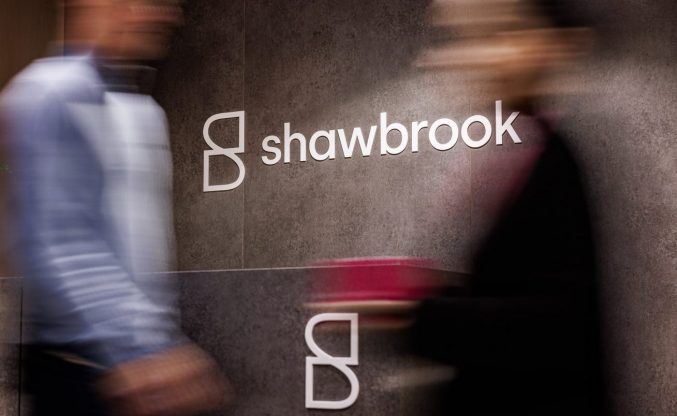Bridging loan key terminology explained
By Helen Jackson

You might have already come across a few of the bridging loan terms listed below, but when researching bridging finance, so many of them can cause confusion.
In this guide, we’re explaining common bridging loan terminology to help you navigate bridging finance with ease.
1) Asset
In the eyes of the lender, an asset can be any item of worth used as security against loan repayments that the lender can claim should the borrower default.
Most assets will be residential or commercial property in the context of gaining a bridging loan. However, other expensive items can be used as assets, such as vehicles, machinery, antiques or land.
2) Bridging finance
Simply another way of saying bridging loan, bridging finance is the product of a bridging loan. It is a fast and flexible short-term borrowing option generally secured against an asset, such as another property, and generally repaid within a year.
Very popular with people looking to purchase or develop a property due to the fast turnaround when it comes to acquiring the money, which can be within 72 hours.
3) Bridging loan calculator
A bridging loan calculator is an online tool usually provided on the website of a lender, broker or another online resource. While not providing an exact figure, its purpose is to give the borrower a rough estimate of the repayment costs of a selected bridging loan based on the criteria provided.
Check out our free bridging loan calculator to quickly understand how much bridging finance could be available to you.
4) Bridge to let (BTL)
The term bridge-to-let (BTL) means the process of using bridging finance to acquire a property for the purposes of renting it out. It’s an alternative to the more traditional buy-to-let associated with traditional mortgages.
Bridge-to-let can be a good alternative if you need money to move quickly on purchasing a property or complete maintenance work to get the rental property into a usable state.
5) Commercial bridging loans
Suppose you are a commercial business owner in need of a short-term cash injection to solve any cash flow issues. Commercial bridging loans offer respite should you need to pay an urgent bill, capitalise on a timely business opportunity or pay your staff’s wages whilst waiting on an invoice to clear.
It works in the same way as a standard bridging loan, in that the borrower must present the lender with a valuable asset and exit strategy to gain access to a bridging loan’s fast, flexible funds.
6) Credit check
In most cases, before offering you the finance you require, the lender will perform a credit check, which is a look into your financial history, usually over the past six years. This check allows the lender to determine how much of a financial risk you are before deciding whether to lend to you.
Your credit check will consist of a credit rating score, determined by things like your credit card payments, loans, and mortgage repayments. If you’ve ever had any CCJs (County Court Judgements) or been declared bankrupt, you might find it a little more difficult to secure finances.
7) Debt consolidation
Debt consolidation is when the borrower condenses all of their outstanding loans into one single and generally more straightforward loan repayment. This action aims to provide the borrower with a singular, more manageable, repayment plan with a better interest rate.
8) Exit strategy
This term refers to the borrower’s plan of action for paying off the bridging loan in full at the end of the fixed term, usually on a pre-agreed date for the debt to be settled.
Many lenders will request an exit strategy from the borrower as part of their application process; it should reassure both parties going into the situation. What could an exit strategy look like? You might plan to sell the property and pay the bridging loan off that way, or you might have cash tied up in another property that’s yet to complete.
9) First charge
When you take out a bridging loan as a first charge, this means, should you sell the property, the lender will be the first in line to receive their repayment over any other lenders — as they are the ‘principal’ loan on the property. If you already have a mortgage on the property you’re securing your bridging loan with, the bridging loan will become a second charge.
Before you take out a bridging loan as a second charge, you will need to gain permission from the mortgage lender, as they’re the first charge.
10) Loan to value (LTV)
Simply put, a loan-to-value, or LTV, is the ratio of the amount you borrow against the value of the property you’re looking to purchase. So, for example, if you are looking to buy a property worth £250k but need to borrow £200k to fund the purchase, the LTV will be 80%.
In bridging finance, borrowers can usually apply for a loan with a 75% loan-to-value ratio. That means the lender is willing to put up 75% of the loan in return for a 25% deposit. Some bridging companies are willing to lend with 100% LTV, but these are quite rare.
11) Non-status bridging loans
With a non-status bridging loan, your credit history and income aren’t taken into account by the lender when deciding whether to lend to you or not. Instead, the loan is based on the potential of a development project. Therefore, you’ll need a robust exit strategy and the necessary deposit to secure a non-status bridging loan.
12) Open and closed bridging loans
When researching bridging finance, you might have stumbled across the terms open and closed bridging loans. You’ll notice more lenders are willing to lend you a closed bridging loan; that’s because, with a closed loan, there’s a fixed repayment date. Whereas an open bridging loan is open-ended, which means the repayment date is flexible.
Read our guide to open and closed bridging loans to find out more.
13) Unregulated bridging finance
It’s important to understand that all commercial bridging finance is unregulated. If you’re living in the house you’re purchasing or an immediate family member is living there, the bridging loan will be regulated by the Financial Conduct Authority (FCA).
What does unregulated mean? It basically means fewer hoops to jump through and therefore quicker application processing. So, by being unregulated, bridging loans can be provided to the borrower quickly, when needed; a luxury that regulated loans can’t really offer.
Hopefully, this list has helped you gather your bearings when it comes to understanding your bridging finance terminology. If you have any questions about bridging loans, please don’t hesitate to get in touch.










You must be logged in to post a comment.